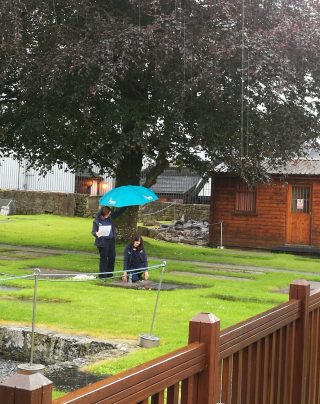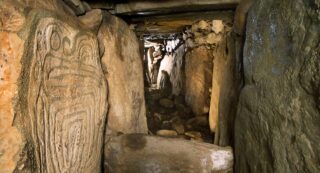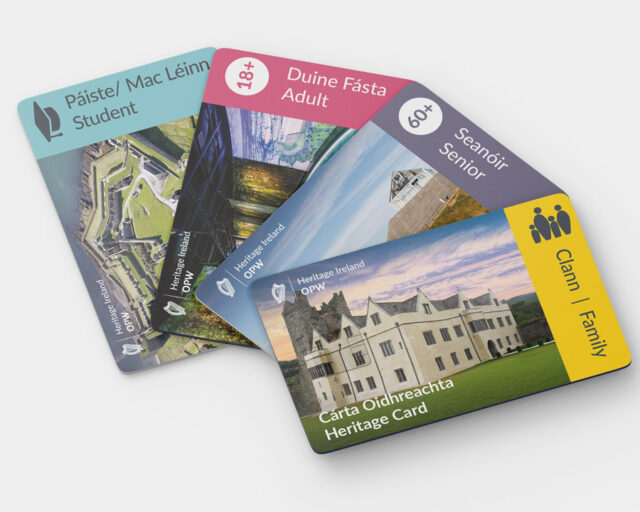Online Exhibitions
Explore our fabulous online exhibitions.
Grave Mapping at Ennis Friary
Find out what we discovered when we mapped all of the burials and memorials at Ennis Friary


Lorg an Síséal
Lorg an Síséal – the mark of the chisel – is an exhibition which celebrates the OPW’s current and recently qualified apprentices and their mentors. See some of the fabulous pieces created by our apprentices and find out how they learn the traditional and ancient techniques needed to care for our most important monuments.

Six Thousand Years of Learning
Six Thousand Years of Learning is an exhibition which explores the very varied types of education and knowledge transfer that have existed at our Heritage Sites for thousands of years. Discover how our monasteries came to produce some of the most precious and revered illuminated manuscripts in the world. See the imaginings of ancient artists that live on in the stunning megalithic art at Loughcrew and Knowth. Marvel at the work of medieval craftsmen that stands still in stone.

The noblest person, the wisest female: the first duchess of Ormonde and her letters
Kilkenny Castle is delighted to launch a new online exhibition “ The noblest person, the wisest female: the first duchess of Ormonde and her letters”.
This exhibition researched by Dr Naomi McAreavey and curated by Maelle Champenois brings to life one of the most significant women in early modern Ireland, Elizabeth Butler, through a small selection of her surviving letters
Upon viewing the painting of the Countess of Ormonde with her young son in the Portrait Gallery at Kilkenny Castle, you would be forgiven for assuming that her main duty was to produce a male heir. In fact, this was only one of her many responsibilities as co-head of one of the most powerful dynasties in early modern Ireland.
Elizabeth Butler, née Preston (1615–84), had inherited, through her mother, more than half of the Ormonde estate, including Kilkenny Castle. Her marriage to her second cousin, James Butler, Viscount Thurles, reunited the estate and title when he became 12th Earl. Alongside her illustrious husband, she enjoyed a dizzying ascent from Viscountess Thurles and Baroness Dingwall in her own right, to countess, marchioness, and then duchess of Ormonde. At the peak of their power, she and the duke were the most influential couple in 17th-century Ireland.
The letters, chosen for this exhibition, reveal the capable wife, wise mother, indulgent grandmother, loyal friend, generous benefactor, and demanding mistress that was the duchess Ormonde. Her handwritten letters reveal the importance of her letter-writing to the advancement of the interests of the Ormonde/Butler family during the tumultuous decades of the mid-17th century. When the couple was separated, exiled, and dispossessed during the Cromwellian era, their survival was due as much to Elizabeth’s efforts as to her husband’s. The petition letter to Cromwell that led to the restitution of a portion of the Ormonde estate and her return to Dunmore House in Kilkenny in the 1650s is the centrepiece of the exhibition.
Other letters, written to her husband, sons, friends, and agents, reveal her wide-ranging activities. She managed the household, estates, and finances; maintained and expanded social networks; distributed patronage and charity; oversaw her children’s education and marriages; and kept a cool head during a crisis. This exhibition showcases the duchess’s role in preserving the honour and interests of the Ormonde/Butler family. In this correspondence we can see the vitality of Elizabeth’s letter writing, it also reveals her material and rhetorical power.
Other letters, written to her husband, sons, friends, and agents, reveal her wide-ranging activities. She managed the household, estates, and finances; maintained and expanded social networks; distributed patronage and charity; oversaw her children’s education and marriages; and kept a cool head during a crisis. This exhibition showcases the duchess’s role in preserving the honour and interests of the Ormonde/Butler family. In this correspondence we can see the vitality of Elizabeth’s letter writing, it also reveals her material and rhetorical power.
See Here to view the exhibition. Available online until May 2024.


